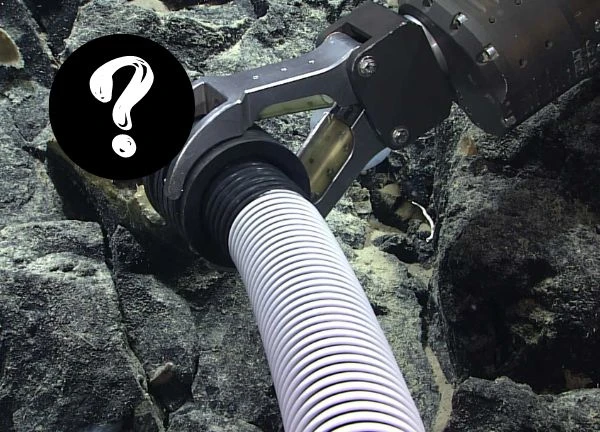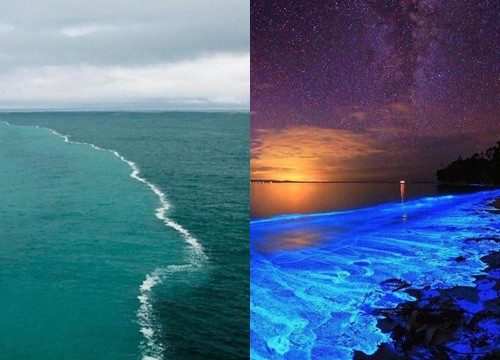Exploring the ocean floor 3,300m deep: diver's heart stopped because of a mysterious 10cm object?

1 | 1 Discuss | Share
In 2011, when Boyan was 16 years old, he came up with the idea to build a self-operated system based on water flow to clean up ocean waste. His ocean cleanup system is up and running and officially collecting the first amount of trash discharged into the sea in the area between California and Hawaii.
It is estimated that every year, about 600,000-800,000 tons of garbage are abandoned or lost by fishermen at sea. Boyan has long emerged as a "golden boy" of the Netherlands and the world. Passionate about engineering since childhood, 14-year-old Boyan once set a Guinness record by organizing an event to launch 213 water-powered rockets at Delft University of Technology (Netherlands).
This ocean cleaning system is the Ocean Cleanup project of the company of the same name founded by Boyan himself. On Twitter, he wrote:
"Our ocean cleanup system is finally picking up plastic waste, from tons of trash to tiny plastic particles."
Ocean Cleanup was born with the goal of collecting floating waste at the Great Pacific Garbage Patch, a phrase used to refer to the concentrated area of ocean waste in the Pacific Ocean. Human waste carried by winds and ocean currents has naturally gathered at several points in the Pacific Ocean, forming huge "garbage islands" three times the size of France.
Boyan's idea is to design a self-collecting system in this area, then with the help of garbage ships to bring it to the mainland, sort it and recycle it into household items.
For many people, environmental problems are a long way to go, especially in the matter of cleaning up trash in the sea. These things have always been a burning problem that has been driving environmentalists crazy for a long time.
According to statistics in 2019, by 2020, the amount of marine trash will reach 7.25 million tons, equivalent to 1000 Eiffel Towers floating in the sea. But this huge amount of waste takes 79,000 years to complete, which is like an impossible task fraught with difficulties. But a young inventor made the impossible possible. It even helped him earn a huge fortune.
The dream of young Dutch inventor Boyan Slat is: "Completely clean up the ocean that has been polluted by humans." And his dream came true. The 21-year-old Boyan Slat who was also named one of the 20 most talented young inventors in the world. He invented the ocean vacuum cleaner with the ability to clean up to 7,250,000 tons of plastic waste.
These plastic wastes do not directly cause the death of marine species, but they will passively receive the PCB and DDT food chains, and eventually enter the human mouth. Slat's initiative is to take advantage of ocean currents to collect about 5 million pieces of plastic from bottles, to plastic bags, to flip-flops at sea.
It is estimated that every year, about 8 million tons of plastic waste wash up in the ocean. Due to ocean currents, most of this garbage is concentrated in five giant "garbage mountains" around the planet. It takes decades for these types of plastic waste to break down. An old plastic bottle from 1977, for example, was retrieved by Slat's team from the Pacific Ocean last year, but the bottle is still very intact.
The microscopic debris when broken plastic has dispersed throughout the ocean, endangering the life of marine life. Turtles, whales and other creatures can get entangled in garbage or ingest bits of plastic that they perceive as food and cannot be digested.
An oceanic expedition once discovered a straw plugged into the head of a sea turtle, one of the endangered species. When people conveniently throw garbage indiscriminately, in fact we have invisibly caused great harm to natural ecosystems and other marine life...
Boyan's invention "Ocean Vacuum Cleaner" is primarily designed to be a mobile boat that follows ocean currents and waves, using solar panels to clean the seabed. It is shaped like a stingray, through the circulation of ocean currents, environmental workers do not need to actively follow to the sea. The collection of plankton and small pieces of plastic is separated by centrifugal force. This equipment not only saves manpower, reduces pollution, but also saves a lot of costs.
According to the Sydney Morning Herald, the device has a length of 2,000 meters, taking advantage of the tide to collect garbage into an area. Boyan's method is much more effective than other methods. His goal is to clean up trash in the Pacific Ocean, the sea between Japan and Korea.
Boyan Slat is a diver in Delft. He witnessed many people throwing trash into the sea after several years of exploring the marine ecosystem of the Azores archipelago off the coast of Portugal. "Once there was a stone age, then there was a bronze age, now we're in the middle of a 'plastic' age," Boyan said.
If this 16-year-old genius inventor hadn't come to Greece to relax and take part in swimming and diving activities, he would still be a world-famous rocket expert to this day. The opportunity that happens to us is always unexpected, if it weren't for the diving trip in Greece, his life would have been completely different. Because during the dive he saw shocking images: there were more plastic bags than fish.
Boyan conducted the experiment in the world's most littered area, the Pacific Ocean, halfway between Hawaii and California. Therefore, he began to seriously study the problem of cleaning up marine litter. He found that the least amount of litter was red debris, because red would make the birds perceive it as food more than other colors. From the carcasses of birds that can be easily seen, its belly is full of red plastic garbage.
To get to where he is today, he had to gather at least 50 possible problems and start looking for answers. At that time, he had only 200 euros left to spend, and soon used up all this money. So he had to try to find sponsors. On March 26, 2013, in his speech on the TedX website, within 15 days he successfully raised $80,000 USD in investment capital and started working on his invention. There were many entrepreneurs who didn't believe that such a young boy could change the entire ocean, and finally he did!
Boyan decided to drop out of school at the age of 19, and set up a research group to fulfill his dream. They plan in 2016 to collect waste along a 2km length in the sea junction between Japan and North Korea, and then convert it into electricity. Slat's next plan is even more ambitious: he plans to install a 100,000m-long cleaning device in the Pacific Ocean. It is expected to be done in 2020 and it will take him 10 years to clean. What is more shocking is that, if they turn these wastes into oil and other products, they will make at least 500 million USD!
Boyan made the reckless decision to drop out of TU Delft to focus entirely on the ocean cleanup project. In 2013, this skinny guy founded the nonprofit Ocean Cleanup, and raised $2.2 million from 38,000 donors in 160 countries.
But no success comes easy. In 2014, oceanographers Kim Martini and Miriam Goldstein declared Boyan's model unfeasible after validation. In 2018, the Ocean Cleanup system test failed consecutively, partly related to technical factors in operation, and part of the system broke down when operating under the sea. For the past year, Ocean Cleanup hasn't cleaned up a single piece of trash.
However, with the latest development, Boyan's Ocean Cleanup has initially shown its effectiveness. And most importantly Boyan can win himself. Perhaps there is no need for a Nobel Prize to honor this young inventor. Because his own story was a bonus. The United Nations once awarded Boyan the Champions of the Earth award for his environmental efforts. "I find it a bit strange to be on the list of successful and talented people, they have accomplished so many things," Boyan confided when he won the prestigious award at the age of 19.
This is the great work of the rescue mission, but this is also of our own making as humans. It's man-made plastic, so don't say, we don't have a way to change it.
When we talk about environmental protection, almost everyone says: " This is a very long way to go, for the next generation to have a headache. However, the problem is that our next life is a problem. Who here?"
'Peeling the scene' The story of Kieu comes to life: 'goosebumps' tourists still want to see it because of 1 thing?  Bảo Yến17:35:07 07/11/2024In the classic work Tale of Kieu by the great poet Nguyen Du, one of the most tragic moments that makes readers cry is when Thuy Kieu throws herself into the Tien Duong River to give birth.
Bảo Yến17:35:07 07/11/2024In the classic work Tale of Kieu by the great poet Nguyen Du, one of the most tragic moments that makes readers cry is when Thuy Kieu throws herself into the Tien Duong River to give birth.

1 | 1 Discuss | Share

4 | 0 Discuss | Share

3 | 0 Discuss | Share

1 | 0 Discuss | Share










3 | 0 Discuss | Report